|
|
 |
==Udaigiri,
in Orissa: very early 400's, with some Jain caves that are several
centuries
earlier. These rock-cut Hindu temples offer lovely representations of a
variety of deities. Images: *Berger*;
*art
and archaeology*. (*Routes*) |
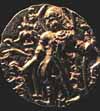 |
==the
Hunas, also called Hephthalites or White Huns, appear
(c.440's-50's)
from Central Asia, and attack Kumaragupta (r.c.415-454) and his son
Skandagupta
(r.c.455-467). Only with much difficulty do the Gupta kings manage to
retain
power; but they lose territory in the northwest, and their dynasty goes
into a terminal decline (*Silk
Road Foundation*. [*Routes*] |
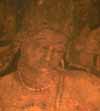 |
==Paintings
at Ajanta (especially c.462-78) become the earliest
surviving examples of painting in India; they depict scenes from the
Buddha's
life-- and earlier lives, as in the Jataka (*IGNCA*)
stories. They are painted within the cave temples (1st c. BCE) at this
complex site. Images: *DSAL*;
*Berger*.
Compare them with the frescoes and sculptures of Sigiriya, in Sri Lanka
(c.477-95): *Sigiriya.org* |
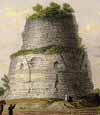 |
==the
Great Stupa at Sarnath (400's?), just outside
Varanasi,
marks the spot where the Buddha preached his first sermon, and thus
began
to "turn the wheel of the law." Its proper name is the "Dhamek Stupa."
The site itself is much older, but the current stupa, now partly in
ruins,
is believed to date from this century. Images: *DSAL*;
*Berger*. [*Routes*] |
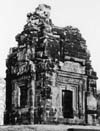 |
==Deogarh,
one of the earliest surviving Jain and Hindu temple complexes
(c.400-499),
located near modern Lalitpur, UP. Its Hindu temples reveal a complex
theology
centered on the god Vishnu (*DSAL*). [*Routes*] |
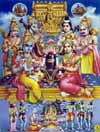 |
==The
great gods evolve into a pantheon: By this point many of
the classic forms of the major Hindu deities have developed, or are
developing.
The tradition also comes to provide many ways to integrate them with
each
other into a coherent theological world. [*Routes*] |
|
|







